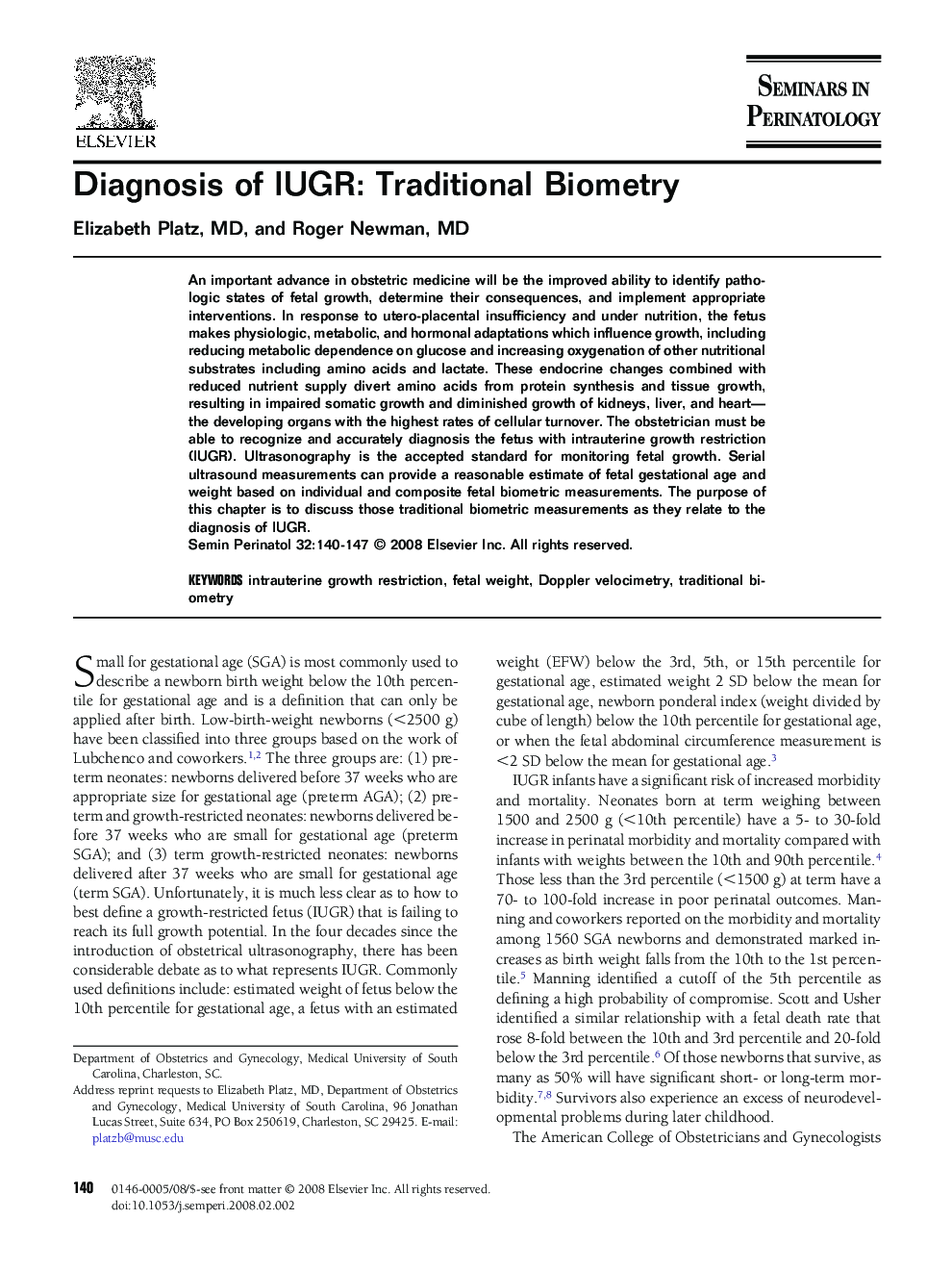| Article ID | Journal | Published Year | Pages | File Type |
|---|---|---|---|---|
| 3836630 | Seminars in Perinatology | 2008 | 8 Pages |
An important advance in obstetric medicine will be the improved ability to identify pathologic states of fetal growth, determine their consequences, and implement appropriate interventions. In response to utero-placental insufficiency and under nutrition, the fetus makes physiologic, metabolic, and hormonal adaptations which influence growth, including reducing metabolic dependence on glucose and increasing oxygenation of other nutritional substrates including amino acids and lactate. These endocrine changes combined with reduced nutrient supply divert amino acids from protein synthesis and tissue growth, resulting in impaired somatic growth and diminished growth of kidneys, liver, and heart—the developing organs with the highest rates of cellular turnover. The obstetrician must be able to recognize and accurately diagnosis the fetus with intrauterine growth restriction (IUGR). Ultrasonography is the accepted standard for monitoring fetal growth. Serial ultrasound measurements can provide a reasonable estimate of fetal gestational age and weight based on individual and composite fetal biometric measurements. The purpose of this chapter is to discuss those traditional biometric measurements as they relate to the diagnosis of IUGR.
